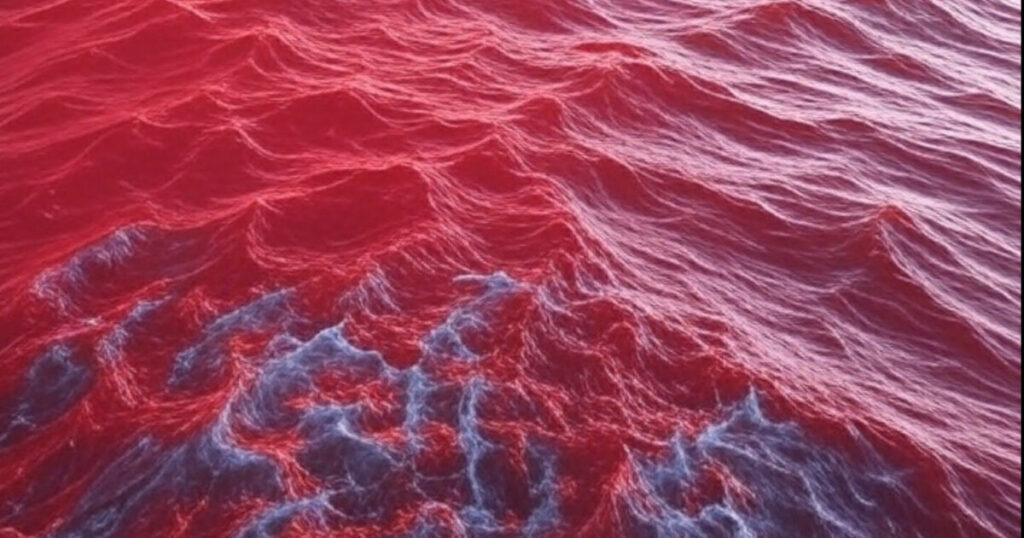The Sea of Galilee — also known as Lake Tiberias or Kinneret — has recently taken on a striking blood-red hue, alarming residents and prompting talk of a possible biblical omen.
The change in color at Israel’s largest freshwater lake, a site of deep religious and cultural importance, quickly went viral after footage circulated online.
Many on social media interpreted it as a sign of the end times, but scientists have offered a far more earthly explanation.
NEW: The Sea of Galilee turned red this month due to algae, sparking apocalyptic fears God’s plagues have returned pic.twitter.com/BAdIY8uJgw
— Election Wizard (@ElectionWiz) August 9, 2025
According to Israel’s environment ministry, the dramatic shift was the result of a bloom of green algae that releases red pigments when exposed to strong sunlight.
Officials confirmed the pigment is harmless, and the water remains safe for swimming.
The Sea of Galilee turned red: A natural phenomenon caused the formation of spots in the waters of the Sea of Galilee, with no danger to swimmers. The red color results from the accumulation of a natural pigment produced by a certain type of algae, in response to strong sun… pic.twitter.com/NI4nXdmPhZ
— Adi (@Adi13) August 4, 2025
Testing by the Kinneret Research Laboratory supported these findings, showing no evidence of toxins or health hazards, and reporting no allergic reactions among those who came into contact with the water.
“No allergic reactions have been reported in areas where the algae has previously appeared,” the laboratory said in a statement.
The Sea of Galilee holds profound spiritual significance in Islam, Christianity, and Judaism, and continues to serve as a vital water source for the region. The Old Testament makes specific reference to waters turning red:
“Thus says the Lord: By this you shall know that I am the Lord,” reads Exodus 7:17-21.
”Behold, with the staff that is in my hand I will strike the water that is in the Nile, and it shall turn into blood.”
Authorities are maintaining close observation of the lake to ensure it remains safe for visitors and continues to fulfill its crucial ecological role.
Read the full article here
